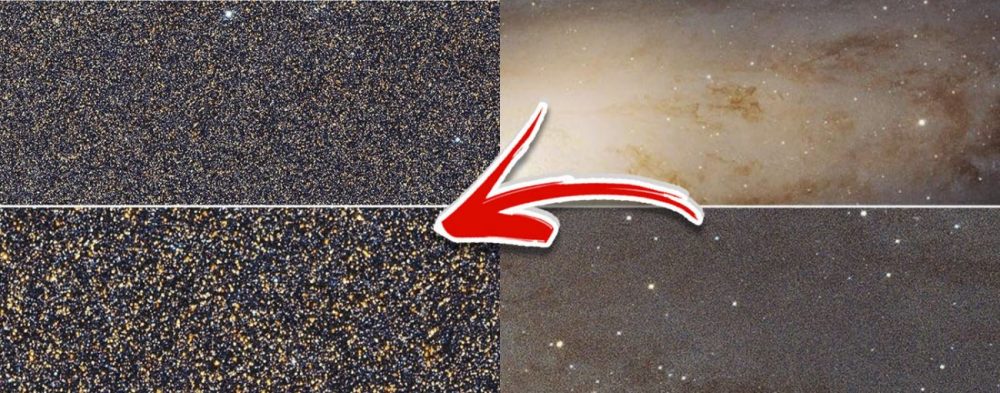Researchers have come up with new ways to look for technosignatures that would indicate the existence of extraterrestrial civilizations.
I like to believe that we are not the only developed life forms out there, given the universe’s vastness. The Cosmos is vast. In fact, with even our best estimates, we still can’t fully understand how large it is. When it comes to exploring the most distant regions of space, humankind is still in its infancy. Nonetheless, we have made great progress in exploring it in the last few decades. But despite our great progress, we have still not been able to answer one of our most profound questions; are we alone in the universe?
The universe is a pretty big place
As Carl Sagan said, “The universe is a pretty big place. It seems like an awful waste of space if it’s just us.” I’m inclined to believe that it’s not just us. Lately, many scientists seem to agree. Concurrently, controversial subjects like UFOs are no longer a conspiracy, and many famous scientists are accepting this subject. The best example is, without reason of a doubt, the chair of Harvard Astronomy, Avi Loeb.
I recently finished reading his book “Extraterrestrial,” and I love how Loeb put forth his idea that the Interstellar Object ‘Oumuamua is artificial. He did so with a great deal of evidence. But most importantly, he did so without fear of what colleagues would think. As he put it, it’s time to let go of our constraints about alien life and the possibility of it visiting us, and it is time to look at the possibility of aliens with different eyes.
Searching for technosignatures
If there are developed civilizations out there, the kind that can build a spacecraft that can visit different star systems across the galaxy—just like ‘Oumuamua, perhaps—how can we find them? According to a group of astronomers and astrophysicists, we should look for “technosignatures” or traces of technology in distant star systems. The idea is not so new but has been updated throughout the years. Now, astrophysicists have updated a list with proposals for technosignatures or technomarkers for their active search. The idea is to look for traces of technology or industrial activity in other parts of the Universe.
Their ideas have been published in the journal Acta Astronautica. The paper includes the first conclusions and updates in the search for extraterrestrial civilizations. In the paper, researchers propose to search distant star systems for traces of industrial pollution in a distant planet’s atmosphere and satellites’ swarms. Researchers also discuss looking for potential gigantic space engineering technologies, such as heat shields to fend off climate change or even Dyson spheres, supermassive objects built around stars to harness energy.
The search for extraterrestrial life has no limits
The search for extraterrestrial life has no limits, and as such, researchers have proposed to look for the above-mentioned traces not only in our own galaxy or those that lay beyond but even in our solar system. After all, it is logical that an advanced alien civilization would send out spaceships to explore the cosmos, just as we are doing with the Voyager 1 and 2 spacecraft. Perhaps they did, and we spotted when we discovered ‘Oumuamua.
“We have no idea whether intelligence is something widespread in the Universe or, on the contrary, whether it is scarce,” revealed Hector Socas-Navarro, an IAC researcher, the Director of the Museum of Science and the Cosmos, of Museums of Tenerife, and the first author of the study.
“For that reason, we cannot know whether these searches have any chance of success. There is no choice but to search and see what we find because the implications would be tremendous”. And search we must. After all, if we don’t take advantage now of the technology we have at our disposal today, when are we going to?
As explained in the article published by IAC, “new telescopes and projects on future space missions will for the first time allow the search for so-called biomarkers, evidence for life on other planets.” However, in addition to that, new missions to Mars and other planets and moons in the solar system will help us get a better idea of the possibilities of alien life and whether it is widespread–albeit in the simplest, most primitive forms.
NASA resumes search for alien life
If we ever find conclusive evidence of alien life, society and civilizations as we know it will forever change. Nothing will be the same. This is a huge implication, and NASA has once again recognized the importance of trying to answer whether we are alone out there. That’s why for the first time since 1993, when the space agency abruptly terminated its initial SETI program, it is resuming the search, but this time with much better technologies and with scientists who are much more open-minded. Read more about how NASA will look for technosignatures here.
Have something to add? Visit Curiosmos on Facebook. Join the discussion in our mobile Telegram group. Also, follow us on Google News





